
Trader Horn is a 1931 American Pre-Code adventure film directed by W.S. Van Dyke and starring Harry Carey and Edwina Booth. It is the first non-documentary film shot on location in Africa. The film is based on the book of the same name by trader and adventurer Alfred Aloysius Horn and tells of adventures on safari in Africa.

Test Pilot is a 1938 American drama film directed by Victor Fleming, starring Clark Gable, Myrna Loy and Spencer Tracy, and featuring Lionel Barrymore. The Oscar-nominated film tells the story of a daredevil test pilot (Gable), his wife (Loy), and his best friend (Tracy).

Fury is a 1936 American crime film directed by Fritz Lang that tells the story of an innocent man who narrowly escapes being burned to death by a lynch mob and the revenge he then seeks. The film was released by Metro-Goldwyn-Mayer and stars Sylvia Sidney and Tracy, with a supporting cast featuring Walter Abel, Bruce Cabot, Edward Ellis and Walter Brennan. Loosely based on the events surrounding the Brooke Hart murder in San Jose, California, the film was adapted by Bartlett Cormack and Lang from the story Mob Rule by Norman Krasna. Fury was Lang's first American film.
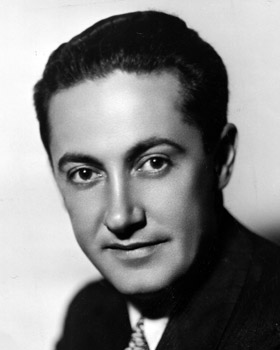
Irving Grant Thalberg was an American film producer during the early years of motion pictures. He was called "The Boy Wonder" for his youth and ability to select scripts, choose actors, gather production staff, and make profitable films, including Grand Hotel, China Seas, A Night at the Opera, Mutiny on the Bounty, Camille and The Good Earth. His films carved out an international market, "projecting a seductive image of American life brimming with vitality and rooted in democracy and personal freedom", states biographer Roland Flamini.
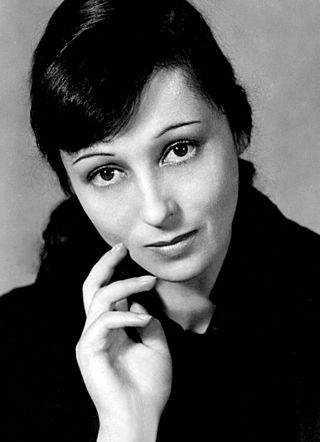
Luise Rainer was a German-born film actress. She was the first thespian to win multiple Academy Awards, and the first to win back-to-back; at the time of her death, thirteen days shy of her 105th birthday, she was the longest-lived Oscar recipient, a superlative that has not been exceeded, as of 2024.

Goldwyn Pictures Corporation was an American motion picture production company that operated from 1916 to 1924 when it was merged with two other production companies to form the major studio, Metro-Goldwyn-Mayer. It was founded on November 19, 1916, by Samuel Goldfish, an executive at Lasky's Feature Play Company, and Broadway producer brothers Edgar and Archibald Selwyn, using an amalgamation of both last names to name the company.

Richard Thorpe was an American film director best known for his long career at Metro-Goldwyn-Mayer.
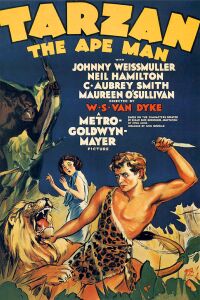
Tarzan the Ape Man is a 1932 pre-Code American action adventure film released by Metro-Goldwyn-Mayer featuring Edgar Rice Burroughs' Tarzan and starring Johnny Weissmuller, Neil Hamilton, C. Aubrey Smith and Maureen O'Sullivan. It was Weissmuller's first of 12 Tarzan films. O'Sullivan played Jane in six features between 1932 and 1942. The film is loosely based on Burroughs' 1912 novel Tarzan of the Apes, with the dialogue written by Ivor Novello. The film was directed by W.S. Van Dyke. Metro-Goldwyn-Mayer released two remakes of Tarzan, the Ape Man in 1959 and in 1981, but each was a different adaptation of Rice Burroughs' novel. It is also the first appearance of Tarzan's famous yell.
Joseph Francis Biroc, ASC was an American cinematographer. He was born in New York City and began working in films at the Paragon Studios in Fort Lee, New Jersey. After working there for approximately six years, he moved to Los Angeles. Once in Southern California, Biroc worked at the RKO Pictures movie studio. During World War II, he served in the U.S. Army Signal Corps and filmed the Liberation of Paris in August 1944. In 1950, Biroc left RKO Pictures and freelanced on projects at various studios. In addition to his film work, which included It's a Wonderful Life (1946) and The Flight of the Phoenix (1965), Biroc worked on various television series, including the Adventures of Superman and Wonder Woman. He frequently collaborated with film director Robert Aldrich.

We Faw Down is a synchronized sound short subject film directed by Leo McCarey starring comedy duo Laurel and Hardy. It was released by Metro-Goldwyn-Mayer on December 29, 1928. While the film has no audible dialog, it was released with a synchronized orchestral musical score with sound effects. It was remade in part with their film Sons of the Desert in 1933.

Two Tars is a silent short subject directed by James Parrott starring comedy duo Laurel and Hardy. It was released by Metro-Goldwyn-Mayer on November 3, 1928.
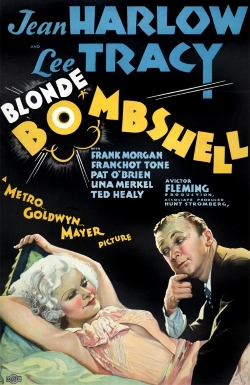
Bombshell is a 1933 American pre-Code romantic screwball comedy film directed by Victor Fleming and starring Jean Harlow, Lee Tracy, Frank Morgan, C. Aubrey Smith, Mary Forbes and Franchot Tone. It is based on the unproduced play of the same name by Caroline Francke and Mack Crane, and was adapted for the screen by John Lee Mahin and Jules Furthman.

Liberty is a synchronized sound short subject film, directed by Leo McCarey starring comedy duo Laurel and Hardy. While the film has no audible dialog, it was released with a synchronized orchestral musical score with sound effects. It was released by Metro-Goldwyn-Mayer on January 26, 1929.
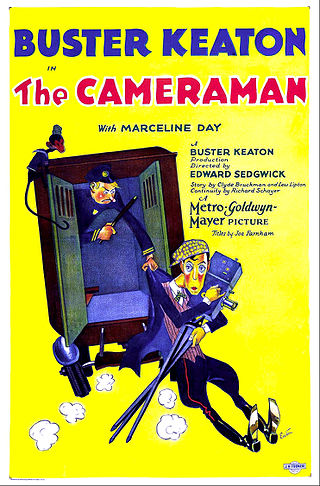
The Cameraman is a 1928 American silent romantic comedy film directed by Edward Sedgwick and an uncredited Buster Keaton. The picture stars Keaton and Marceline Day.
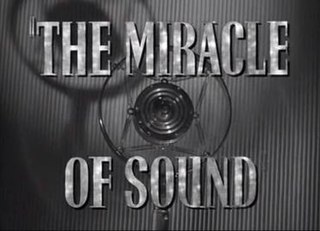
A New Romance of Celluloid: The Miracle of Sound is a 1940 short documentary film, presented and directed by MGM sound engineer Douglas Shearer and narrated by Frank Whitbeck, which goes behind the scenes to look at how the sound portion of a talking picture is created. The film, which was produced as part of the studio's Romance of Celluloid series, is available as a bonus on the Warner DVD of The Shop Around the Corner.

Speed is a 1936 Metro-Goldwyn-Mayer action film directed by Edwin L. Marin. It starred James Stewart, in his first starring role, and Wendy Barrie. Although only a low-budget "B" movie, the film was notable for its realistic cinematography by Lester White, incorporating scenes from the Indianapolis 500 race and on-location shooting at the Muroc dry lake bed, used for high-speed racing by "hot rodders" in the 1930s. Advance publicity trumpeted that Stewart drove the specially-prepared "Falcon" to 140 mph (230 km/h).

Too Hot to Handle, also known as Let 'Em All Talk, is a 1938 comedy-drama directed by Jack Conway and starring Clark Gable, Myrna Loy, and Walter Pidgeon. The plot concerns a newsreel reporter, the female aviator he is attracted to and his fierce competitor. Many of the comedy gags were devised by an uncredited Buster Keaton.

The Exquisite Sinner is a 1926 American silent drama film directed by Josef von Sternberg and adapted by Alice Duer Miller from the novel Escape by Alden Brooks. Starring Conrad Nagel and Renée Adorée, the Metro-Goldwyn-Mayer (MGM) never given a general release. No known print of the film has been recovered to date. Later that same year a second feature film Heaven on Earth, directed by Phil Rosen was released with the same cast and same sets, but a different screenplay. Rosen's version performed poorly at the box office. Sternberg reported, "the result was two ineffective films instead of one.” The American Film Institute Catalog Feature Films: 1921-30 by The American Film Institute.
The Romance of Celluloid is a 1937 short black and white documentary film, narrated by Frank Whitbeck, which goes behind the scenes to look at the manufacture of film and the making of motion pictures. The film was the first of the studio's Romance of Celluloid series which also included:
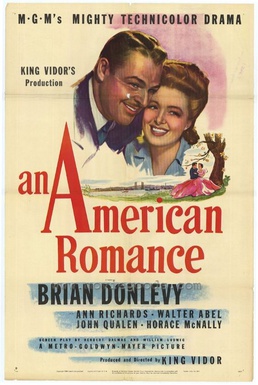
An American Romance is a 1944 American epic drama film directed and produced by King Vidor, who also wrote the screen story. Shot in Technicolor, the film stars Brian Donlevy and Ann Richards and is narrated by Horace McNally. The film is also known as The American Miracle.

















